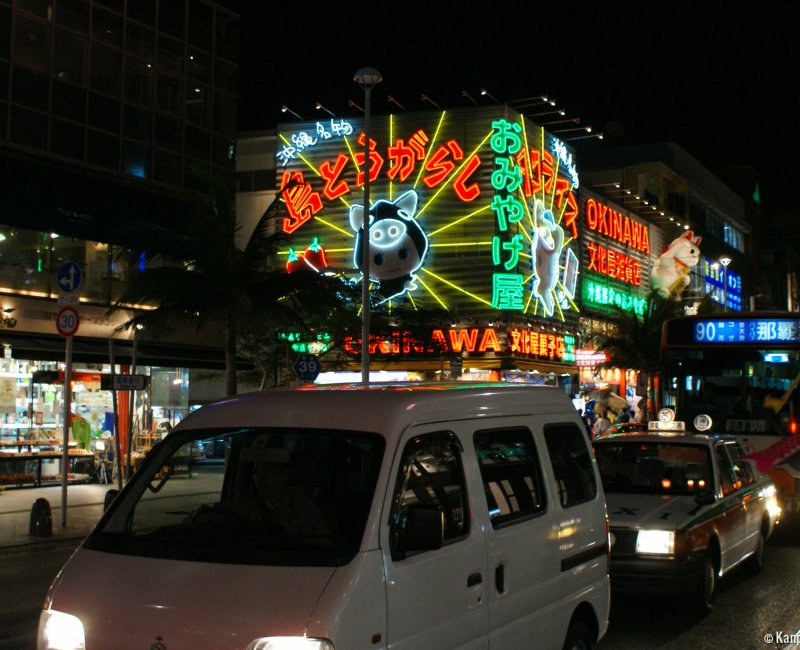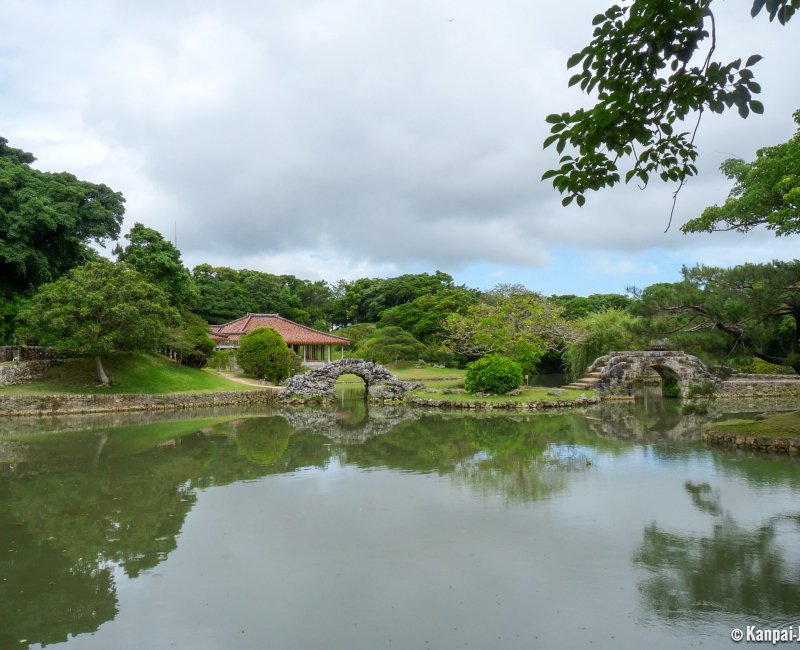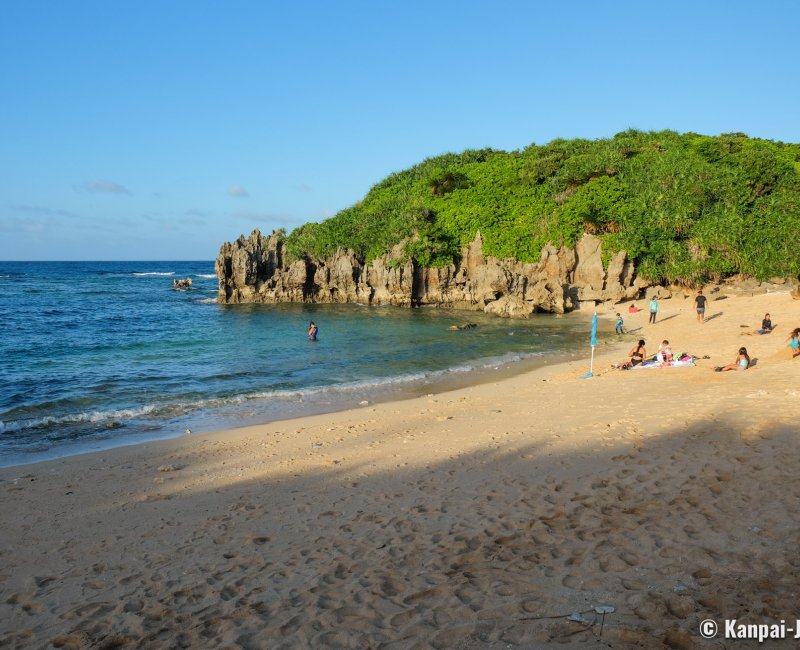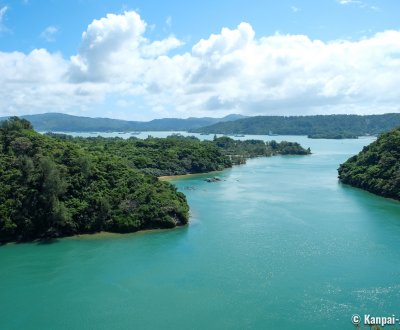Okinawa Honto
The Main Island of the Subtropical Archipelago
Okinawa Honto is the largest island of the eponymous prefecture and home to the regional archipelago’s economic and political capital Naha. Located more than 1,500 kilometers south-west of Tokyo in Japan, between the East China Sea and the Pacific Ocean, this long and narrow stretch of land enjoys paradise-like subtropical landscapes and a very specific history.
With an approximate superficies of 1,200km², Okinawa Honto (沖縄本島) is the main island of the eponymous archipelago (沖縄諸島 Okinawa shoto) as well as the largest land of Okinawa prefecture (沖縄県 Okinawa-ken). It consequently shelters the most populated cities of the area, including Naha, the capital of Okinawa.
While it became the touristic showcase of these subtropical islands blessed with paradise-like landscapes, Honto concentrates the cultural and historical heritage of this territory that is definitely apart from the classical Japanese culture. The island was home to the former independent Ryukyu Kingdom for 450 years, and became Japanese only in 1879. After the bloody Battle of Okinawa preceding the defeat of the Japanese Empire during WWII, it was occupied during 27 years by the American army. The fiftieth anniversary of the restitution of Okinawa to Japan by the United States was celebrated on May 15, 2022.
The island itself is divided into 3 distinct areas:
- Nanbu (南部), the South;
- Chubu (中部), the Center; and,
- Hokubu (北部), the North.
The traces of its agitated history and the natural charm of its lands can be explored by car 🚙 for a larger autonomy or by local bus. There are 135 kilometers and a 2 hours’ drive between Cape Hedo at the northern end, and Cape Kyan at the southernmost end of Okinawa Honto.

Naha and the historical heritage in the south
Thanks to its international airport, the capital Naha is the easiest access to visit the island and broadly speaking the prefecture. It is a large city somewhat overwhelmed by its urbanization that sprouted with the post-war reconstructions. A few important traditional sites stand out, such as Shikina-en garden, or the iconic Shuri Castle 🏯. Unfortunately, its main pavilion burnt down in October 2019 and is closed for renovation until 2026.
The main shopping street named Kokusai-dori is the touristic address to taste Okinawa’s cuisine, in friendly evening parties organized in traditional restaurants. There are also many American eateries where to enjoy burgers and meat steaks.
The southern coast of the island is home to several WWII commemorative places such as the Okinawa Peace Memorial Quasi National Park and the former underground headquarters of the Japanese Navy. Following the traces of the Ryukyu Kingdom, it is also possible to discover the sacred site of Sefa Utaki as well as the feudal ruins of Tamagusuku and Chinen, both castles enlisted in the UNESCO World Heritage List since 2000 and pilgrimage places. Moreover, there are several fortresses’ ruins scattered throughout Honto’s territory, the most popular being Nagagusuku, Katsuren, Zakimi and Nakijin. Their coral limestone walls were built at the top of hills from which unfold beautiful panoramas. Lastly, on the south-east coast, Mibaru Beach 🏖 is one of the most beautiful of the island.

The international presence at the center
The center of Okinawa Honto is quite narrow and extends to the north of Naha, from Ginowan City to approximately the north of Onna. This area is laden with several U.S. military bases, including the important Kadena Air Base, the largest of Eastern Asia. Many inhabitants frequently criticize its presence and call for the total departure of the U.S. forces from the territory.
The atmosphere is therefore more western as families of the military forces live here. There are several theme parks such as Mihama American Village in Chatan City, or the folkloric Ryukyu Mura in Onna. This cosmopolitan presence is a real boost for the arts, culture and events in the area.
Resorts and other comfortable hotel 🏨 complexes are plenty in the west, on the side of the East China Sea. This part of the coast, with cobalt-blue water and steep reliefs has become a large resort area with renown diving spot and sand beaches for farniente. The Capes Maeda, Manzamo and Busena are particularly appreciated for the 360° view they offer on the rock formations and the sea.

Nago and Yanbaru’s wild forest in the north
Nago is north Okinawa Honto’s large city, located at the entrance to Motobu Peninsula, a popular tourist destination especially for the great Churaumi Aquarium and the remains of Nakijin Castle. In the center of the city, not far from the port, the Orion Brewery, historically established in Nago, offers guided tours. Pineapple is the local agriculture’s staple fruit and has a dedicated theme park 🎡 called in English "Nago Pineapple Park".
When traveling by car, you can tour the small islands of Sesoko, Kori and Yagaji, connected by bridges. We recommend stopping by one of the cafes or traditional restaurants that offer a beautiful view on the landscape which is both rural and maritime.
The further north on the island, the more nature reclaims its rights back. This region called Yanbaru is covered by a dense and wild forest, protected by a national park since 2016. Rare and endemic birds species can be observed, such as the Okinawa rail and Okinawa woodpecker. We recommend the guided tours, the hikes in the mountains or kayak navigation along the mangrove in Gesashi Bay to discover all the riches of the local wilderness.
Generally speaking, the north of the island is attractive for travelers amateurs of nature and of a more rural and sustainable tourism. Do not hesitate to go to the farms directly selling their harvest to customers. There, you can try local products (fruits, algae, honey) at an affordable price.
Okinawa Honto’s attractiveness of is not limited to its capital and sightseers are strongly encouraged to leave the urbanized parts of the island to discover its unique landscapes. The Kerama Islands, that includes some of the prefecture’s closest other islands, are accessible in a few hours of ferry ⛴️ from the port of Naha.


